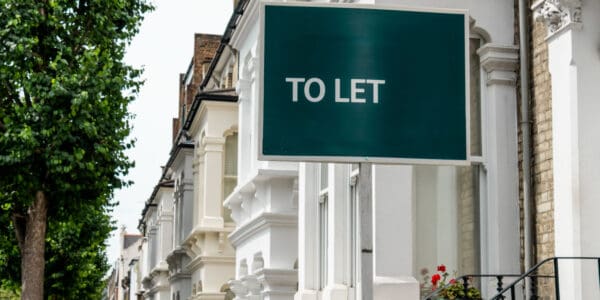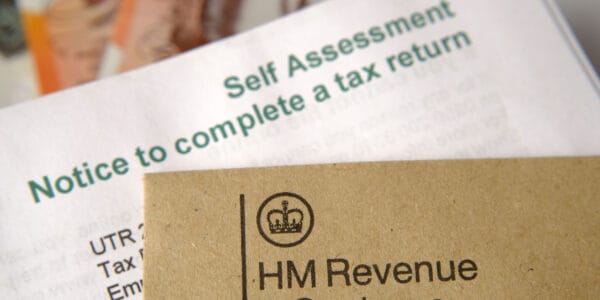Letting property is like any other type of business – you must abide by certain regulations and pay tax on any profit that you make. However, property investment and landlord tax requirements can be complex, especially if you are new to the world of buying, selling, and renting out residential property in the UK. This guide should give you a better understanding of the topic.
Tax when you buy residential property
You may need to pay one of the following types of tax when you buy a property in the UK:
- Stamp Duty Land Tax (SDLT) – England and Northern Ireland
- Land and Buildings Transaction Tax (LBTT) – Scotland
- Land Transaction Tax (LTT) – Wales
The type of tax and the amount you need to pay depends on where in the UK the property is situated, how much you paid for it, and how you intend you use it.
1. England and Northern Ireland – Stamp Duty Land Tax
If you purchase a residential property in England or Northern Ireland, you must pay Stamp Duty Land Tax (SDLT) if it is worth more than £250,000. The current rates of SDLT are as follows:
- 0% on properties up to £250,000
- 5% on the portion from £250,001 to £925,000
- 10% on the portion from £925,001 to £1.5 million
- 12% on any remaining amount above £1.5 million
However, the rules are different when buying additional residential properties. If you already own one or more properties and you buy an additional one (or part of one) for £40,000 or more, you usually have to pay an extra 5% on top of the standard SDLT rates.
These higher rates of Stamp Duty Land Tax are as follows:
- 5% on properties up to £250,000
- 10% on the portion from £250,001 to £925,000
- 15% on the portion from £925,001 to £1.5 million
- 17% on any remaining amount above £1.5 million
For example, if you were to purchase an additional residential property in England or Northern Ireland for £500,000, you would pay:
- 5% on the first £250,000 = £12,500
- 10% on the remaining amount between £250,001 and £500,000 = £25,000
- Total SDLT bill = £37,500
Companies always pay the higher rates of SDLT for any residential property they buy that costs £40,000 or more, even if it is their first property purchase.
If it costs more than £500,000, the transaction may be subject to the 17% higher SDLT rate for corporate bodies instead. However, relief may be available in certain circumstances.
2. Scotland – Land and Buildings Transaction Tax (LBTT)
Land and Buildings Transaction Tax (LBTT) is the Scottish equivalent of Stamp Duty Land Tax. If you buy a residential dwelling (property) in Scotland for more than £145,000, you will pay the following rates of LBTT for each portion of the purchase price:
- 0% up to £145,000
- 2% from £145,001 to £250,000
- 5% from £250,001 to £325,000
- 10% from £325,001 to £750,000
- 12% over £750,000
However, if you buy an additional residential dwelling in Scotland for £40,000 or more, you may need to pay the Additional Dwelling Supplement (ADS) on top of LBTT. For transactions on or after 16 December 2022, the ADS is 6% of the purchase price.
For example, if you were to purchase an additional residential dwelling in Scotland for £500,000, you would pay:
- 2% LBTT on the amount between £145,001 to £250,000 = £2,100
- 5% LBTT between £250,001 and £325,000 = £3,750
- 10% LBTT on the remaining amount between £325,001 and £500,000 = £17,500
- 6% ADS on £500,000 = £30,000
- Total tax due = £53,350
Land and Buildings Transaction Tax also applies to companies, even when buying their first residential property.
3. Wales – Land Transaction Tax (LTT)
Land Transaction Tax (LTT) is the Welsh equivalent of SDLT. There are two rates of LTT: main and higher.
If you purchase a residential property in Wales for more than £225,000, you must pay the following main rates of LTT:
- 0% up to and including £225,000
- 6% on the portion between £225,001 and £400,000
- 7.5% between £400,001 and £750,000
- 10% between £750,001 and £1.5 million
- 12% on any remaining portion above £1.5 million
However, if you already own a residential property, you may need to pay the higher residential rates of LTT if you purchase an additional one for £40,000 or more:
- 4% up to and including £180,000
- 7.5% on the portion between £180,001 and £250,000
- 9% between £250,001 and £400,000
- 11.5% between £400,001 and £750,000
- 14% between £750,001 and £1.5 million
- 16% on any remaining portion above £1.5 million
For example, if you were to buy an additional residential property in Wales for £500,000, you would pay:
- 4% on the first £180,000 = £7,200
- 7.5% on the portion between £180,001 and £250,000 = £5,250
- 9% between £250,001 and £400,000 = £13,500
- 11.5% on the remaining amount between £400,001 and £500,000 = £11,500
- Total LTT due = £37,450
Companies are required to pay the higher rates of LTT, even if it is the company’s only property.
Paying tax on rental income
When you rent out a property, you must pay tax on profits from rental income. Your profit is the amount of money that is left after deducting expenses and allowances from your rental income.
Rental income is the money that you receive from your tenants, including their rent and any additional payments, such as maintenance fees, utilities, and repairs to the property.
Allowable expenses are costs that you incur in the day-to-day running of your rental property, such as:
- letting agent fees
- legal and accountancy fees
- advertising costs
- council tax
- buildings and contents insurance
- essential maintenance and repairs
- utility bills
- service charges (e.g. gardening or cleaning)
- general administrative costs (e.g. stationery, telephone calls)
If you own the property through a company, you may also be able to claim interest on mortgage payments and loans as an allowable expense. However, this tax relief is not available if you own a rental property as an individual, rather than through a business.
Previously, all residential landlords could reduce their tax bills by deducting their mortgage interest expenses from rental income. Since 6 April 2020, individual landlords are now only entitled to a 20% tax credit, even if they are a higher-rate or additional-rate taxpayer.
GOV.UK provides detailed guidance on the changes to tax relief for residential landlords.
Tax on property you own as an individual
If you personally own the property, you will pay Income Tax and National Insurance contributions through Self Assessment if your profit from rental income is:
- between £2,500 to £9,999 after allowable expenses, or
- £10,000 or more before allowable expenses
You won’t pay tax on the first £1,000. This is your annual property allowance. If your rental income is between £1,000 and £2,500 per year, contact HMRC to find out if you need to send a Self Assessment tax return.
The rate of Income Tax you will pay on rental income will depend on your total annual earnings from all sources (e.g. your salary or wages from employment, other self-employed income, or pensions).
Tax on property owned by a company
If you own property through a limited company, you must count the rental income like any other business income. This means that you will need to include the income in your annual accounts, report it in your annual Company Tax Return, and pay Corporation Tax on any profit you make.
Tax when you sell a residential rental property
When you sell a residential rental property, you may have to pay Capital Gains Tax on any profit (‘gain’) that you make. The gain is the difference between the price that you paid for the property and how much you sold it for – not the amount of money you are left with after the sale.
If you are a basic-rate taxpayer, you will pay 18% on any gain that is within the basic Income Tax band, and 24% on anything above the basic tax rate. If you are a higher-rate or additional-rate taxpayer, you will pay 24% on the total gain.
However, you’ll only pay CGT on gains above the annual tax-free allowance (the ‘Annual Exempt Amount’), which is currently £3,000 for the 2024/25 tax year. You may also be able to deduct certain costs associated with buying, improving, and selling your rental property from your overall gain.
The tax rules are different when selling a rental property that is owned by a company. In such instances, the company would be liable to Corporation Tax on any ‘chargeable gain’ (profit) that it makes from the sale of any asset, including residential rental property.
Final thoughts
Landlord tax obligations can be complex, so we recommend appointing an experienced property tax accountant when buying, selling, and letting out residential property.
Whether you own property as an individual or through a limited company, an accountant can ensure that you comply with all relevant regulations and help you manage your investments and tax obligations effectively.
We hope that this post has given you a better understanding of landlord tax requirements in the UK. If you have any questions, please leave a comment below and we’ll get back to you as soon as possible.
Please note that the information provided in this article is for general informational purposes only and does not constitute legal, tax, or professional advice. While our aim is that the content is accurate and up to date, it should not be relied upon as a substitute for tailored advice from qualified professionals. We strongly recommend that you seek independent legal and tax advice specific to your circumstances before acting on any information contained in this article. We accept no responsibility or liability for any loss or damage that may result from your reliance on the information provided in this article. Use of the information contained in this article is entirely at your own risk.












Join The Discussion